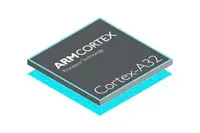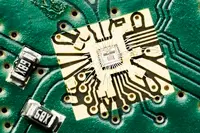Electronics News
Archive : 23 February 2016 год
 A business built on the premise of licensing IP can prove lucrative, as evidenced by ARM’s latest financial report. But when the number of deals signed declines, times can be tough, as Imagination Technologies has found out.
A business built on the premise of licensing IP can prove lucrative, as evidenced by ARM’s latest financial report. But when the number of deals signed declines, times can be tough, as Imagination Technologies has found out.
ARM says its Q4 2015 revenues grew by 19% to £269.1million. In dollar terms, revenues rose by 14% to $407.9m. For its 2015 financial year, revenues were £968m (+22% over 2014) or $1.489billion (+15%).
Amongst the highlights identified by the company are 51 new processor licences, including one architecture licence for the V8-M core. It notes that 4bn ARM based chips shipped during the quarter, 16% more than the same quarter in 2014.
Imagination Technologies, the UK’s second largest IP developer, is not seeing the same degree of financial success and there have been rumblings over the last few months about its financial performance. Much like ARM, the company is dependent mainly upon licensing revenues and royalties. But while ARM diversified its business some years ago, Imagination’s business model still relies on deals that sees its graphics IP integrated into high volume consumer electronics devices. As such, it is somewhat hostage to fortune.
In December 2015, Imagination reported a loss for the six months ended 31 October 2015 and, in its latest statement, says it expects to report a loss for its financial year. Crucially, the statement also noted ‘the pace of deal closure is falling short of prior expectations’. When you don’t close deals, you don’t make revenue and investors want action. In this case, it was removing chief executive Sir Hossein Yassaie.
ARM’s CEO Simon Segars said: “Demand for our technology is increasing and, during the quarter, we signed multiple licences for the next generation of high performance and secure ARM processors. Our increased investments in both 2015 and 2016 will help us meet demand by extending the capabilities of our technology and the ecosystem and will support long term growth.”
Pete Hutton, president of ARM’s product groups, said he was ‘quite happy with the numbers’. “Revenue is good and we are delivering strongly in terms of acquisitions, R&D investment and addressing new markets. We are making progress in the networking sector and doing well in servers.”
According to Hutton, the v8-M architectural licence – not signed by a supplier to the auto industry – represented the desire of some companies to do something different, but to retain the ability to take advantage of the ARM ecosystem. “Although targeted initially at the automotive sector, we’re seeing v8-M in the IoT because we want security in all our devices.”
ARM also announced that Qualcomm was the first company to take advantage of a new licence option called Built on ARM Cortex Technology. Hutton explained. “Some customers want to take a processor core and customise it for specific applications. Unlike the architectural licence, the customisation work is done by ARM.” According to ARM, Qualcomm has signed a deal which covers multiple ARM processors.
Despite scepticism in some quarters, Hutton remains bullish about ARM’s prospects in data centres. “We have seen large deployments of initial silicon and one reason why we have been adding engineering resource is to help customers get their designs to volume. We will see developments over the next few quarters and a lot of applications coming online.”
ARM has also signed its first physical IP licence for 7nm technology with an unnamed foundry. Concluding, Hutton said 7nm was not as far away as people might think.
Pic: “We are making progress in the networking sector and doing well in servers.” Pete Hutton
Author
Graham Pitcher
Source: www.newelectronics.co.uk
 Looking to drive what it says is the ‘next wave of innovation in the embedded, wearables and IoT sectors, ARM has announced the Cortex-A32, the smallest device yet based on its v8 architecture. However, the part has been optimised for 32bit processing.
Looking to drive what it says is the ‘next wave of innovation in the embedded, wearables and IoT sectors, ARM has announced the Cortex-A32, the smallest device yet based on its v8 architecture. However, the part has been optimised for 32bit processing.
Intended to provide an upgrade path for those using Cortex-A5 and A7 cores, the A32 is said to support ‘ultra high efficiency’, with 25% more efficiency than available from an A7 with lower power consumption.
Amongst features claimed for the part is the availability of more than 100 new 32bit instructions, enhanced floating point performance, faster software encryption and better media performance. In fact, the A32 appears to excel at the latter functions, according to figures supplied by ARM. Streaming performance is said to be more than five times better than that offered by an A5, while cryptography is improved by more than 13 times. TrustZone security is available, as is a Cordio radio block and a Mali GPU.
The core can be synthesised to meet performance applications or to meet area needs. In its quad core version, with a NEON SIMD engine and an FPU, the A32 runs in excess of 1GHz and consumes less than 75mW per core. When stripped down to a single core, the A32 requires less than 0.25mm2 of silicon on a 28nm process, consuming less than 4mW at 100MHz. Both versions feature the 128bit AMBA AXI4 bus.
Author
Graham Pitcher
Source: www.newelectronics.co.uk
 Researchers at Aalto University have fabricated an electricity conducting material combination with what they call ‘especially promising properties’ by merging graphene and gallium selenide to create a heterojunction.
Researchers at Aalto University have fabricated an electricity conducting material combination with what they call ‘especially promising properties’ by merging graphene and gallium selenide to create a heterojunction.
While many 2D structures that combine with graphene have been fabricated manually, the structure developed by Riikonen and his colleagues uses elements from lateral and vertical device design, which is said to enable the use of standard semiconductor fabrication methods.
“Our inspiration came from existing silicon technology and we want to bring out the state-of-the-art fabrication of 2D material devices from research labs to industry,” claimed researchers Wonjae Kim. “In addition to new and simpler way of manufacturing, our components have excellent characteristics: for example, the on/off ratio – a critical parameter in electronics – is more than 10³. This underscores the feasibility of both GaSe and the device concept.”
He added: “2D components open completely new possibilities for the development of electronics. They would be suitable for wearable electronics and could be placed on spectacles and windows. Moreover, the components are suitable for various sensors.”
Author
Graham Pitcher
Source: www.newelectronics.co.uk
 NXP is using Embedded World as a platform to boost the prospects of near field communications (NFC) technology in a range of applications.
NXP is using Embedded World as a platform to boost the prospects of near field communications (NFC) technology in a range of applications.
According to Rafael Sotomajor, SVP of NXP’s secure mobile transactions business, ‘the time is now’ for NFC, but he concedes that further work needs to be done to increase its acceptance. “Different applications will have different requirements, which means, for NXP to help the ecosystem, we need different products.”
Building on an announcement in December 2015, the company is adding two NFC options. NTAG I²C plus is a tag solution that combines passive NFC functionality with an I²C interface, enabling ‘tap to connect’ communication. The tags are said to have better data transfer performance, password protection and an ECC based originality signature.
Meanwhile, the PN7462, 7362 and 7360 single chip solutions integrate an ARM Cortex-M0 MCU, USB and a contact and contactless interface with full NFC support. “There is nothing in the market like these devices,” Sotomajor noted, “and we are looking forward to seeing market acceptance.”
In December, NXP introduced the PN5180, a multiprotocol NFC front end aimed at contact payment applications.
The PN7462 development kit, pictured, features antennas, software, a smartcard reader, three PCBs for antenna matching and 10 PN7462 samples.
Author
Graham Pitcher
Source: www.newelectronics.co.uk
 While analogue transmitters are less suitable for integration in advanced CMOS nodes, digital transmitters typically fall short when it comes to high-end performance parameters such as out-of-band noise and spurious emission.
While analogue transmitters are less suitable for integration in advanced CMOS nodes, digital transmitters typically fall short when it comes to high-end performance parameters such as out-of-band noise and spurious emission.
Belgian nanoelectronics research center imec and Vrije Universiteit Brussel claim to have overcome this with a transmitter architecture that combines the best of both worlds. The partners have demonstrated a 0.22mm2 CMOS resistive charge based direct launch digital transmitter with an out of band noise of -159dBc/Hz and say the development paves the way to small form factor SAW less transmitter implementations that all cellular standards.
Incremental charge based D/A (QDAC) conversion is said to allow full direct digital control of the transmitted signal, while enabling filtering of the intrinsic noise that reduces out-of-band noise and alias components.
The prototype features resistor based QDACs that deliver RF power directly to the 50? output load, omitting the need for a power amplifier driver. A peak output power of 3.5dBm and a phase noise of -159Bc/Hz at 45MHz offset from both 900MHz and 2.4GHz modulated carriers is claimed, with an error vector magnitude of -36dB for a 64 QAM modulated signal.
Author
Graham Pitcher
Source: www.newelectronics.co.uk

